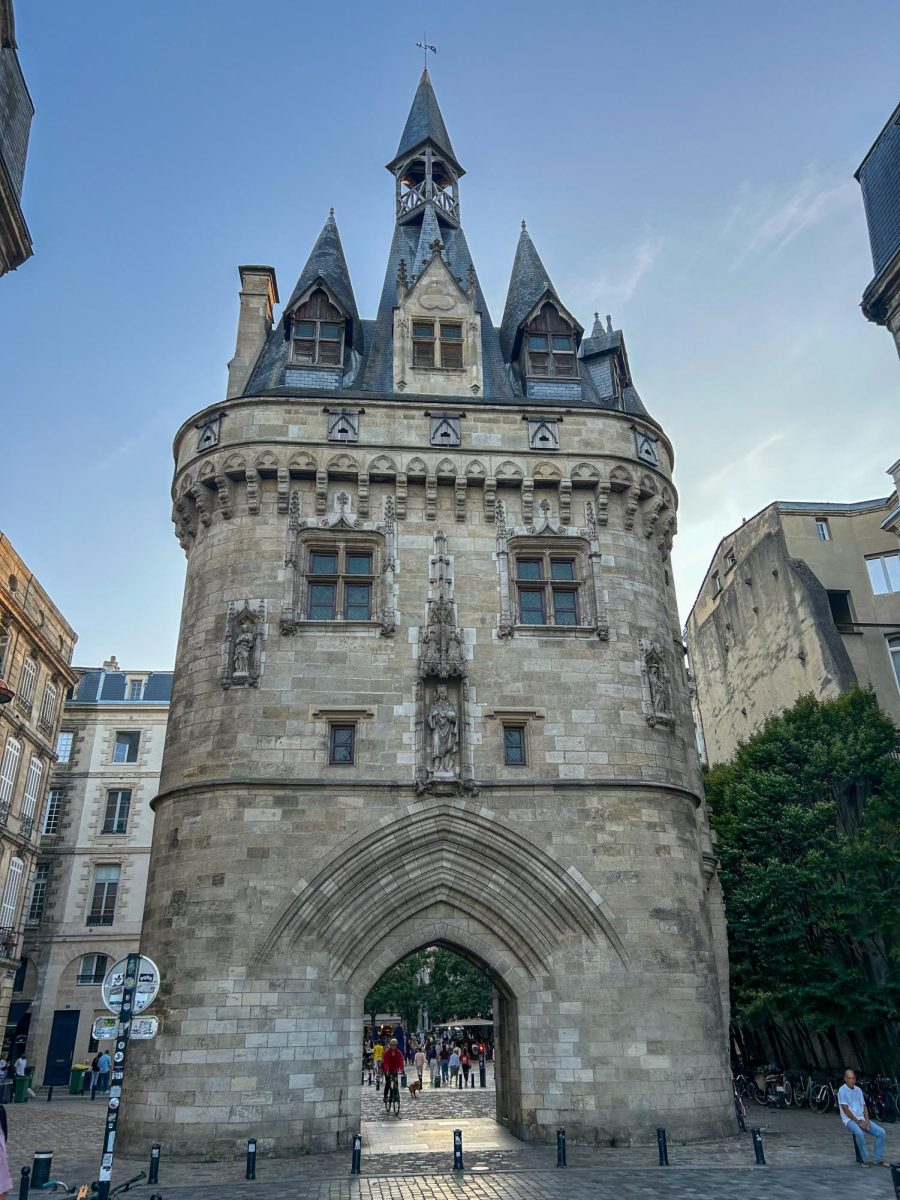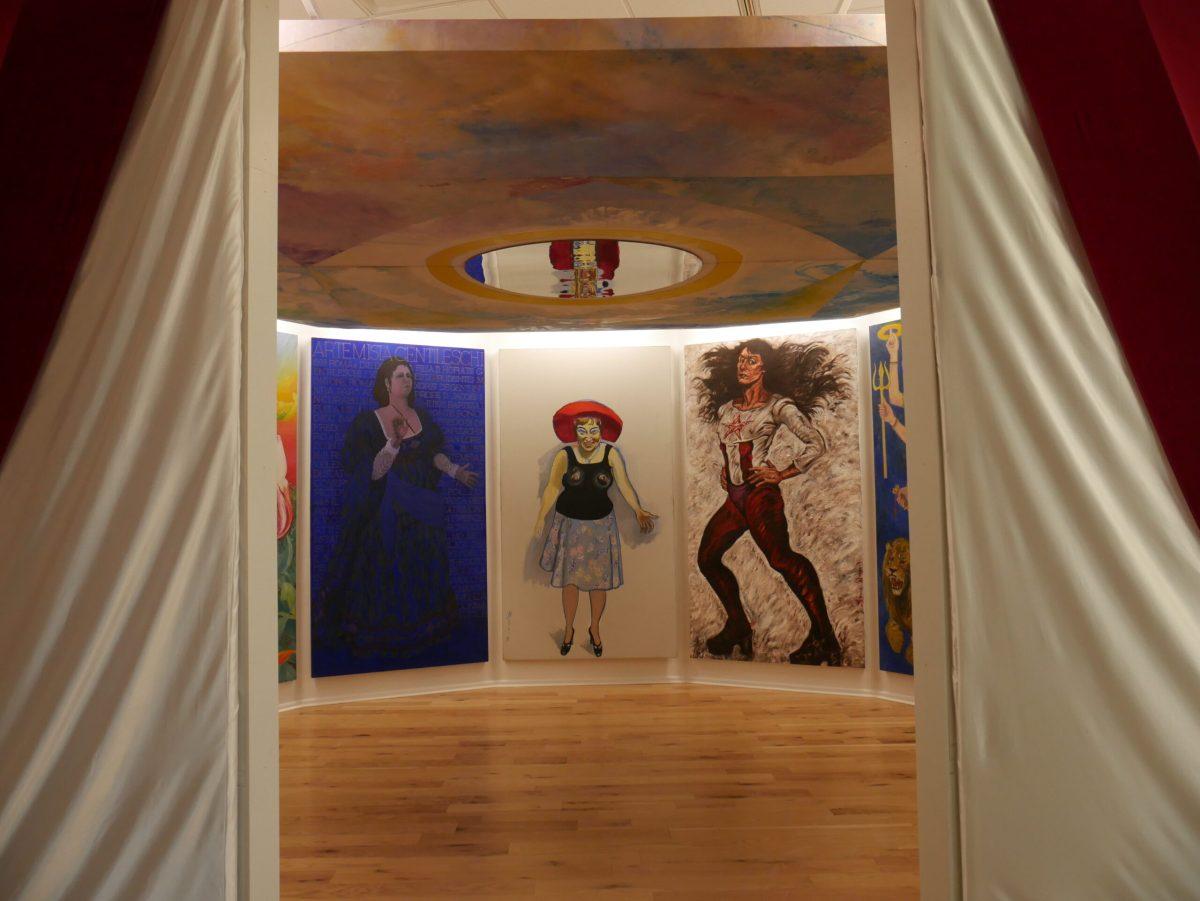Tucked into a back corner of Westby Hall’s first floor, the newly-built Center for Art and Social Engagement is like no other gallery on Rowan’s campus. With one permanent exhibit, The Sister Chapel, and space for temporary shows, the center is part of a larger narrative linking the visual arts with contemporary issues.
First premiering in 1978 and playing on the religious devotion of the Sistine Chapel, The Sister Chapel is a shrine to women’s achievement as portrayed through the eyes of 13 collaborative female artists. Among these 13 figures are “Joan of Arc” (painted by Elsa M. Goldsmith in 1976), “Frida Kahlo” (Shirley Gorelick, 1976), “Lilith” (Sylvia Sleigh, 1976) and “Self-Portrait as a Superwoman (Woman as a Culture Hero)” (Sharon Wybrants, 1977-78). In 2019, the installation was gifted to Rowan University for permanent view by the Shirley Gorelick Foundation.
According to the center in an informational handout, its founding principles can be traced to the women’s art movement, inspired by The Sister Chapel.
“Programming at the center encourages interdisciplinary projects and research,” the handout reads, “that explore diverse and timely social issues through multidisciplinary practices, broadly conceived to include a variety of mediums such as photo journalism, film and video, historical ephemera, faculty and student research presentations, info-graphic presentations, STEM/STEAM installations, public programming and more.”

Senior chemical engineering major and Center for Art and Social Engagement assistant Noah Hough believes that The Sister Chapel is what makes this gallery unique from others, on campus or anywhere else. Having also worked at the Rowan University Art Gallery on High Street with curator Mary Salvante, he understands the particular value offered by The Sister Chapel.
“The actual Sister Chapel itself is rather old, and it used to be a mobile art piece,” Hough said. “Around 2016, due to a donation, it was able to find a permanent home here, but for a long time it wasn’t able to be fully realized as to what the actual artists wanted it to be. This piece is a collaborative work of multiple different artists coming together to create a centralized piece. Each painting [is part of a whole work], but each has their own distinct styles. If you come here, you can see this piece in the way it was intended.”
Meanwhile, the center’s temporary exhibit, Susan Sterner’s “Estoy Por Aqui/I am here,” is a photojournalistic approach to examining the challenges of working-class women in El Salvador. Specifically, Sterner focuses attention to the apron, or delantal, worn by these women as a vessel through which to convey daily narrative.
“Flashy and feminine, the delantal is at once an artifact of domesticity and subservience, and a sign of hustle and determination all wrapped around the most vulnerable zone of the body,” Sterner said. “…It is both armor and advertising as the women ply homemade sweets, stack vegetables or pat out tortillas and call to clients.”
“Estoy Por Aqui/I am here” will be on display until May 10.
The Center for Art and Social Engagement exhibition space is open for application from any organization or unit. Requests for proposal may be found at rowan.edu/artgallery, and are reviewed on an ongoing basis.
For questions/comments about this story, email [email protected] or tweet @TheWhitOnline.

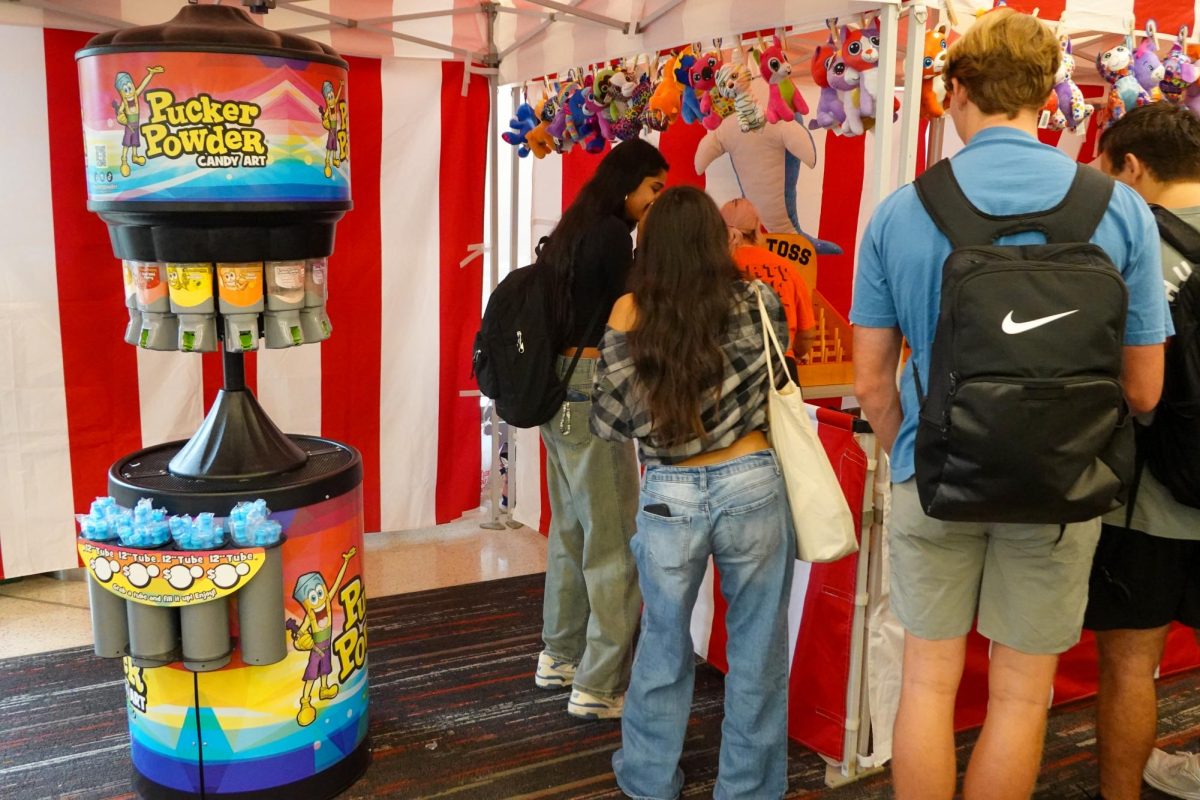


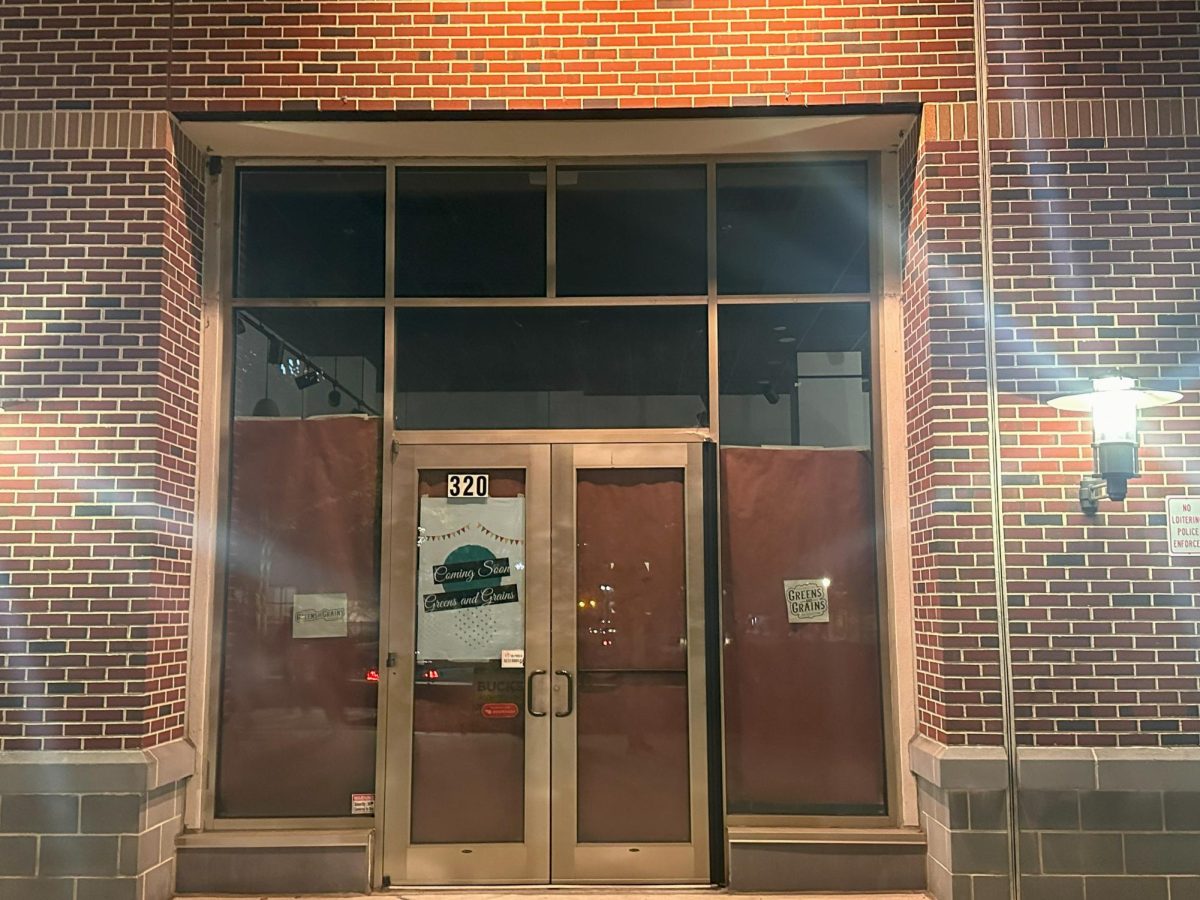























































































































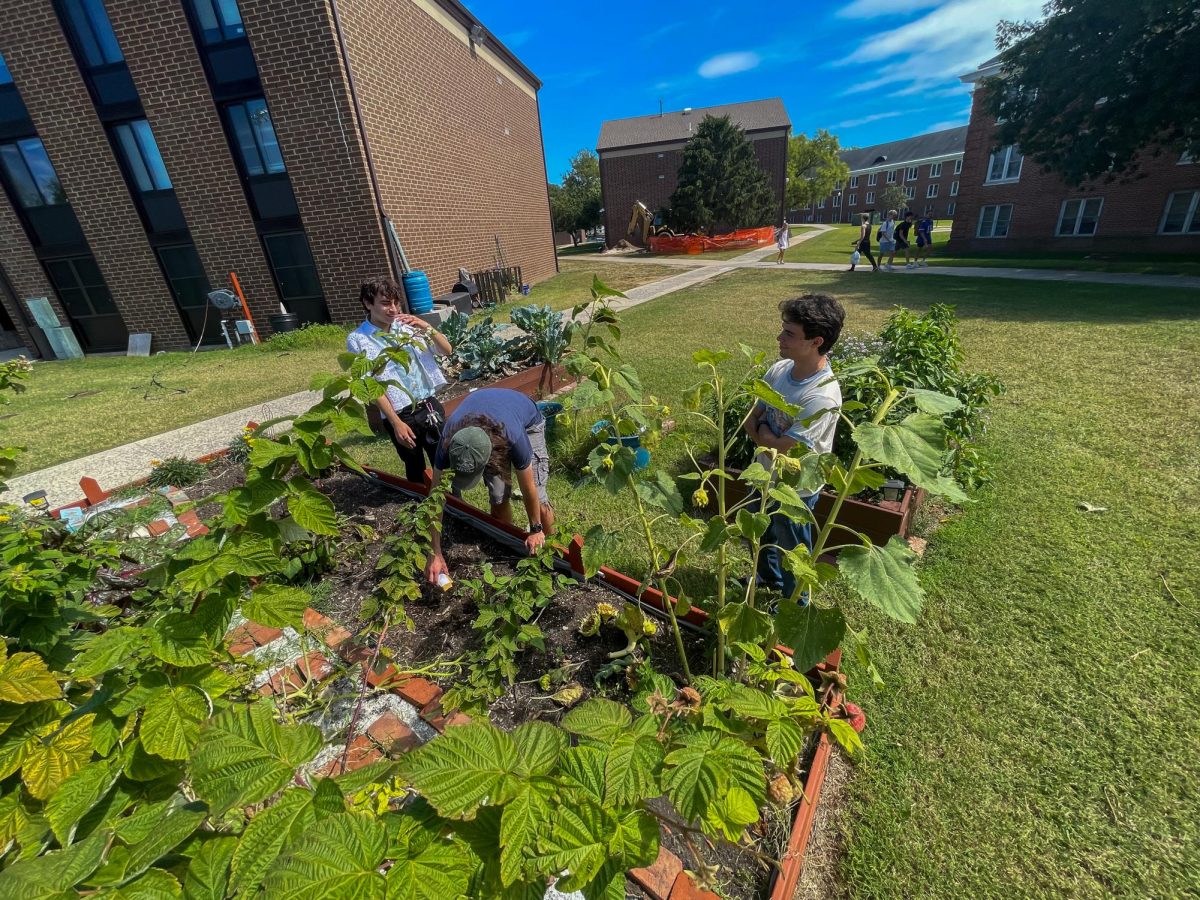





















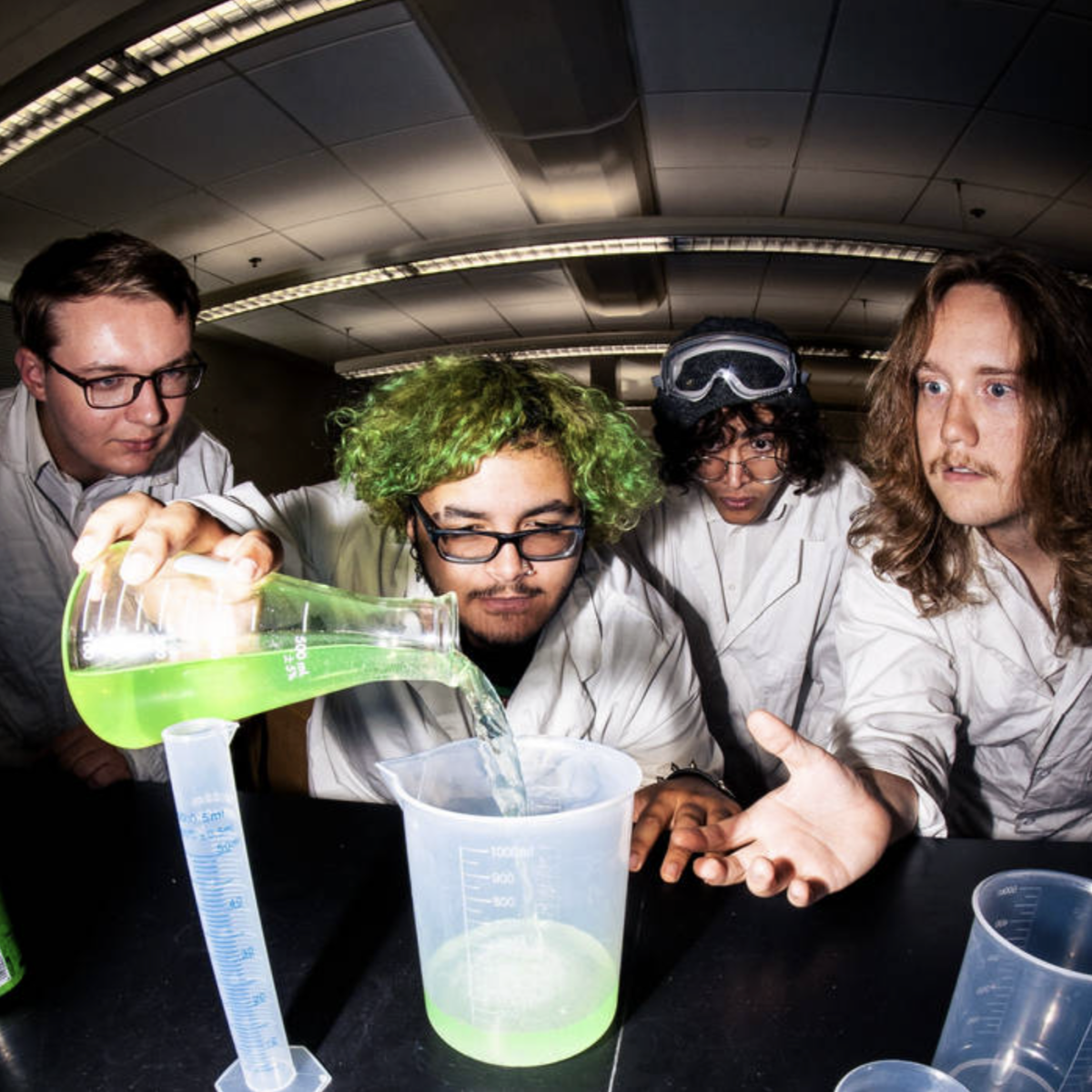




!["Working with [Dr. Lynch] is always a learning experience for me. She is a treasure,” said Thomas. - Staff Writer / Kacie Scibilia](https://thewhitonline.com/wp-content/uploads/2025/04/choir-1-1200x694.jpg)















